Congratulations to Nick Famoso who successfully defended his dissertation on Friday March 10th! Nick is now off to John Day Fossil Beds National Monument where he has been the Chief of Paleontology and Museum Curator since November 1st. 
Author: Nick Famoso
#2016SVP
A few weeks ago, the UO vertebrate paleontology group returned from SVP in Salt Lake City. It was a very eventful meeting with eight current members presenting as well as 10 alumni. Nick and Kelsey also organized the student and postdoctoral roundtable and their committee (student and postdoctoral liaison committee) raised over $7000 for the Cohen Award to support student research through SVP, the largest amount ever raised at a meeting! Nick was also the recipient of the Mary Dawson pre-doctoral fellowship grant!! And even though Dr. Davis didn’t present, he did meet with several prospective grad students so all in all, it was a very successful meeting for all members of the group.
Bill’s Pass Adventure
Introduction
Dr. Hopkins, Nick Famoso, Dana Reuter, and Danielle Oberg returned from a grand adventure in eastern Oregon in the middle of July. Their primary mission was to explore a remote locality in eastern Oregon known as Bill’s Pass and collect as much relevant data as possible from the site. Bill’s Pass is a BLM locality that was first collected by Ted Fremd and other John Day Fossil Beds National Monument staff in 1995, but the sheer number of isolated bones and partial skeletons coupled with the remoteness of the locality proved to be a daunting task that the Monument staff felt would be a great experience for students to learn from. Bill’s Pass contains exposures of the Turtle Cove Member of the John Day Formation which is a zeolotized claystone deposited in the Oligocene epoch about 31-25 Million Years Ago.
Day 1: The Drive
Our crew started out from Eugene and made our way out to Bill’s Pass near the town of Fossil, Oregon. We had two trucks, the trusty red Toyota 4Runner (Code Name: Adventure Slug), and a Ford F-350 (Code Name: Trucky McTruckerston) that joined us from the UO motor pool. The four wheel drive on these two trucks proved to be invaluable as we needed to drive down eight miles of gravel, unimproved road to get to the locality. Adventure Slug had no problem with this road, as its smaller wheel base was perfectly suited to the two-track road, but Trucky McTruckerston had some difficulties. Nonetheless, we arrived at a beautiful terrace overlooking the John Day River about 1.5 miles west of our target locality. We set up camp, and a couple of hours later it started to rain, making the clay-rich John Day Formation exposures slick and sloppy.
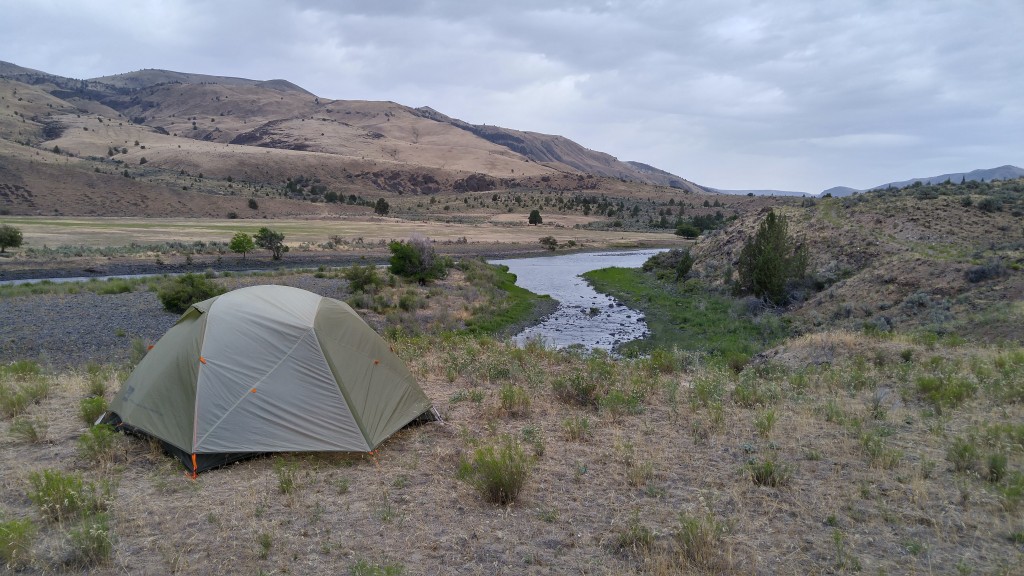
Our campsite for the week. This nice terrace overlooking the river was the place of several nights of cooking, chatting, guitar playing, and fly fishing.
Day 2: Exploration and Rediscovery
We started the day by exploring the various outcrops near our campsite. It was a wet morning, so we soon had a thick layer of clay adhering to the soles of our boots. We managed to find fossils in the closest outcrops, but struck out on the others we explored this morning. We walked back to camp to eat lunch and then hit the trail again to find the real Bill’s Pass.
We all wandered around the area for another hour or so. Nick decided to go a bit farther east than we had gone before and eventually came across some beautiful outcrops. After about 10 minutes on the outcrop Nick found the first fossils of Bill’s Pass, an exploded oreodont jaw weathering down the hill. A little while later, Nick was joined by the rest of the field crew. We explored Bill’s Pass and found three jackets that had been left by previous field crews. We started to uncover these jackets to find their extent. Nick also found a partial rhino leg that was just starting to be uncovered by erosion. All told, we found four areas that require jacketing. We realized that there was a much simpler way to get back to camp by following a drainage rather than over hill and dale and we took this route back to camp and made dinner.
Day 3: Jackets and Surveying
We hiked back the 1.5 miles to Bill’s Pass and continued excavating around the jackets. Toward the middle of the day Nick and Danielle started setting up the surveying pins that we brought. They placed the origin point then a north, south, east, and west pin 10 meters from the the origin. We borrowed a differential GPS from Josh Roering’s geomorphology lab and used it to survey the five pins and the precise locations of each of the areas where jackets were being collected and excavated.
We continued to work on excavating our jackets. Sam worked on the area low in the outcrop where water from runoff would pool and leave the fossils and the jacket in mud. The biggest of these jackets we called the soup jacket for the semiliquid slime that surrounded it after the first rainstorm. Dana worked on a large jacket on the west side of the outcrop the we called the monster jacket; it was large when we started, and seemed to keep growing as we excavated. The previous crews who had worked on this jacket made sure to build in a nice drainage trench to keep mud from accumulating here. Danielle worked on a jacket that was on top of a knob in the middle of the outcrop. There were many bones exposed around her jacket and also a bit of mud. Nick started helping with the jacket Danielle was working on, but eventually wandered off to the east and found a partial rhino leg.
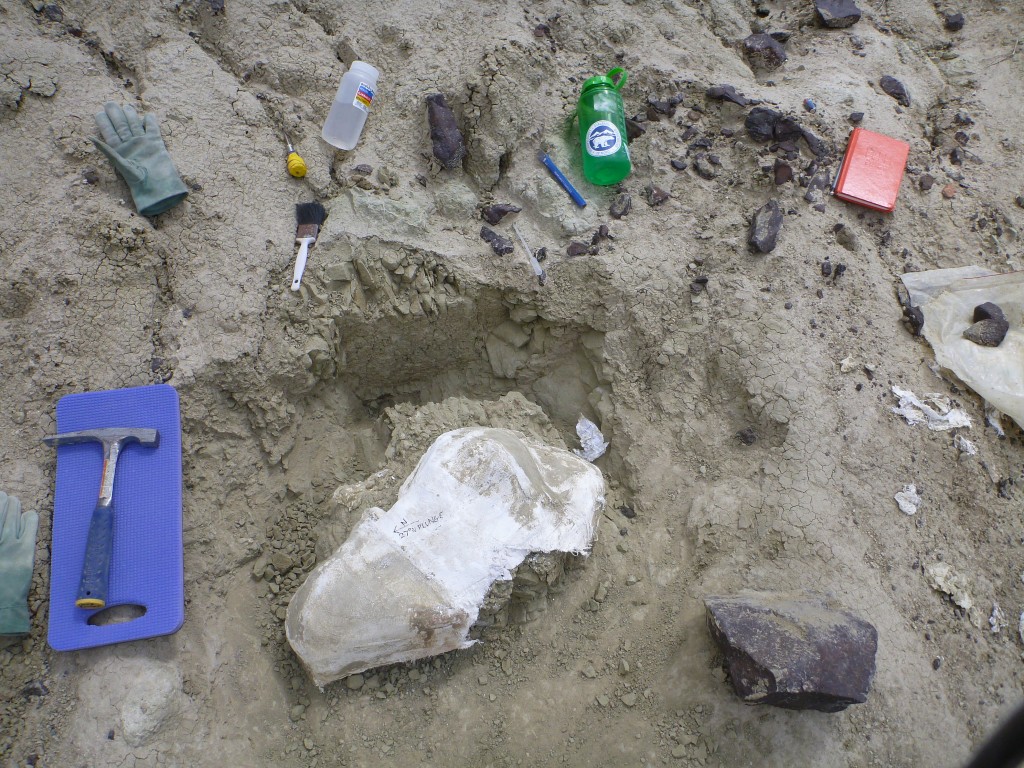
The monster jacket at the start of the day…
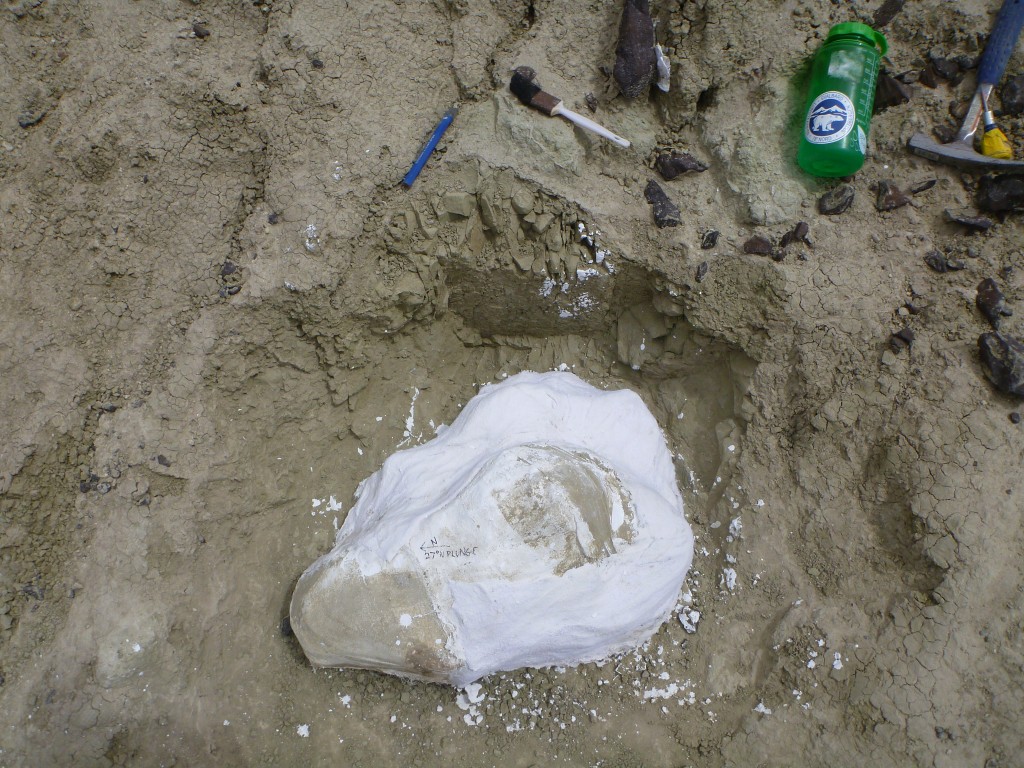
The monster jacket at the end of the day…
Once all of our data were collected, it was dinner time!
Day 4: More Jackets, More Troubles
This was our last full day at Bill’s Pass. We had to finish making all of our jackets and collecting all of the associated data. Nick spent time working on his rhino leg. First, the distal femur was exposed on the surface and when he removed it, the tibia was exposed! Once Nick started trenching around the tibia, he found the fibula and upon farther trenching the astragalus showed up.
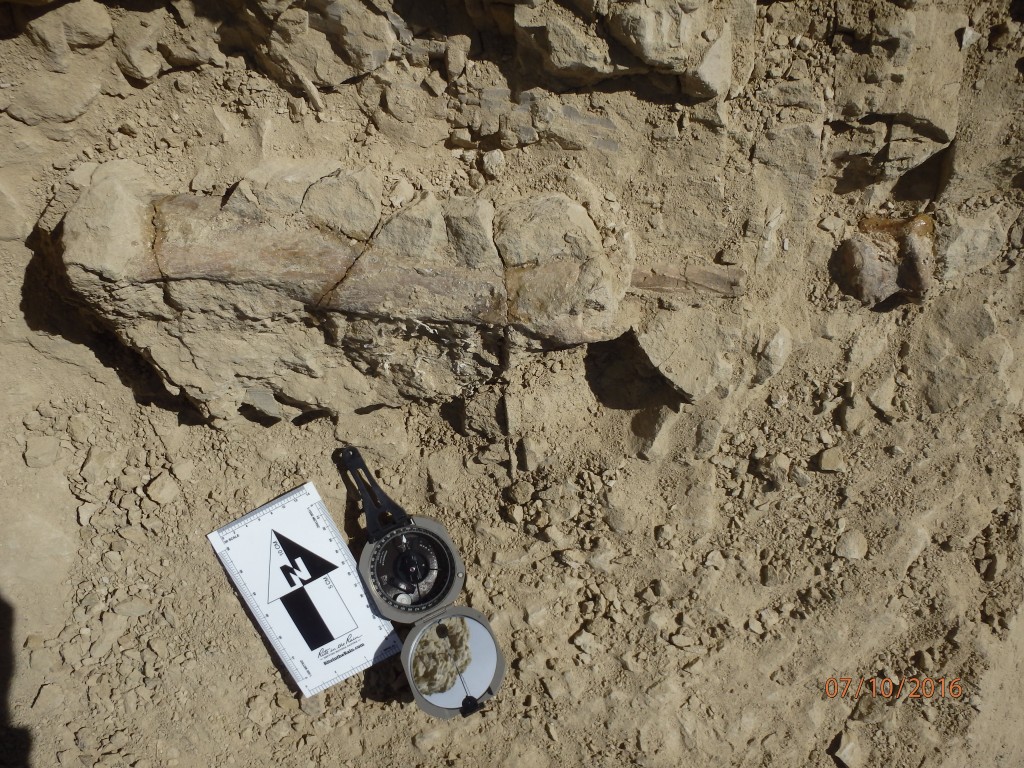
Nick’s rhino leg. The tibia is sitting on top of the smaller fibula. The astragalus is off to the right.
Towards the end of the day, we finished excavating around our jackets. Before we flipped the jackets, we needed put plaster caps on them. We used a combination of tissue paper, aluminum foils, plaster impregnated bandages, and quilt batting with plaster. Once the capping jackets were dry, we made sure there were enough fractures under the jackets to insure that the jackets would release from the ground. In the John Day Formation, we usually use big chisels and small sledgehammers to cause the fractures. The first of the jackets we flipped was Sam’s soup jacket.
It was a successful flip and the first of six successful jackets we would flip that day. None of our jackets failed, a fact that won Nick (the perennial optimist) a six-pack from Sam. The next large jacket ended up being the monster jacket. Dana spent most of her time working on this jacket using hammer and chisel to form trenches and to undercut the jacket to form a lip. Normally, this is a simple task, but the monster jacket kept getting larger as Dana found more bone. Eventually, we needed to just pull bones out of the trench rather than make the jacket larger. She increased the size of the capping jacket once all of the bones were contained. Dana, Nick, and Sam all helped to flip the monster jacket. By the time we flipped the jacket, it was dinner time. We all walked back to camp for dinner while carrying all of the other jackets we collected except for the monster jacket. After dinner we returned to haul out the monster jacket.
We put the monster jacket onto our pack frame and tied it on as best we could. The jacket had to be about 150 lbs, and none of us could pack it out by ourselves. We decided to try and divide the weight and put one of us on each corner of the pack frame. We started trying to carry this behemoth out on the 1.5 miles of cattle paths back to camp. The first half mile was on narrow cattle paths on rather steep slopes and took us about an hour. By the time we made it past the narrowest part of the trail the sun had dipped so far below the horizon that we could no longer safely walk down the path together and we decided to drop the pack and walk back to camp and come back in the morning to finish the trek.
Day 5: The Long Haul
Today we said goodbye to Bill’s Pass. Before we left for more field work in the John Day Basin, we had to go back to get our giant jacket and haul it the remaining mile or so down the cattle path down to camp. This was a slow process (~1.5 hours). We walked back to where we dropped the jacket the night before and retied the straps holding the jacket to the frame pack. This time we assigned three people to carry the jacket, two in the back and one in the front, and continued to walk down the path. We switched positions several times and the fourth person switched in a couple of times over the course of the haul. The first sign of camp was Trucky McTruckerston; we’ve never before been so happy to see a big white truck! We made a beeline straight for the truck and dropped the jacket on the frame in the bed of the truck. What a relief! We packed up camp and started heading back down the eight miles of unimproved dirt road. The drive was a bit shorter this time and when we hit the pavement we cruised to the town of Fossil to have lunch. We then drove over to the John Day Basin, set up camp, and spent some time in the John Day River!
Epilogue
We continued to do field work in the John Day Basin for another three days, finding many fossils of small animals in four different localities. On the last day, we drove back to Eugene and dropped off our finds on campus.
Horses of Paisley Cave
Congratulations to Dr. Davis and lab alumna Brianna McHorse who’s paper on identifying the horses from Paisley Cave came out earlier this week. The paper was covered by the University of Oregon in an Around the O article. You can find the article here.
Dr. Meaghan Emery-Wetherell
Congratulation to Meaghan Emery-Wetherell who successfully defended her dissertation this morning! She worked on understanding variation in even-toed ungulates (Artiodactyla) and specifically looked at the extinct group known as oreodonts. Good job on your accomplishment! She will be moving to Central Washington University as an adjunct lecturer this fall.
Two More Senior Theses Presented!
Congratulations to our two remaining seniors who presented their senior theses this week! Eva Biedron successfully defended her senior thesis on fossil squirrels from a middle Miocene site in central Oregon through the Clark Honors College on Monday. Selina Robson presented her senior thesis to the Department of Geological Sciences on a new species of Miocene hyena from Kyrgyzstan today. Congratulations to both of them for finishing their degrees! Eva will be headed off to Vanderbilt University to work on her masters while Selina will be heading to the University of Calgary to work on hers!
Paper on new late Hemingfordain site published!
Congratulations to Win McLaughlin and Dr. Hopkins on the release of their paper, “A new late Hemingfordian vertebrate fauna from Hawk Rim, Oregon, with implications for biostratigraphy and geochronology” online early today in the Journal of Vertebrate Paleontology! This is the first publication from Win’s masters thesis work. Check out the paper here.
New paper on enamel complexity and body size in horses!
Congratulations to Nick Famoso and Edward Davis who’s paper, “On the relationship between enamel band complexity and occlusal surface area in Equids (Mammalia, Perissodactyla),” came out today in the journal PeerJ. They used fractals to quantify enamel band complexity on the chewing surface of horse teeth and investigated the relationship between complexity and body size while accounting for phylogeny. They found that as horses get bigger, their teeth become less complex! You may view the paper here.

Figure 4: Phylogeny used in this study with continuous characters, tooth area and fractal dimensionality (D), mapped onto the tree. This tree is a time-scaled (Ma) informal supertree. Characters were mapped using the contMap function in the phytools package version 0.4–45 (Revell, 2012) implemented in R. Length refers to the length of the legend in units of branch length. † = extinct taxon.
Phi Beta Kappa 2016 Nominees
Congratulations to Selina Robson and Kendra Walters who were nominated for membership into Phi Beta Kappa, the oldest and most prestigious honorary society in the nation! Additionally, Kendra was designated as one of the Oregon Six, denoting her as one of the top six outstanding students of the 2016 graduating class at UO.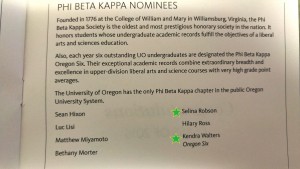
Another Thesis Presentation!
Congratulations to Kendra Walters who gave a wonderful presentation of her Senior Thesis yesterday. Her research focused on testing the Species-Energy hypothesis for mammals in the United States over the last century. Kendra will be heading off to UC Irvine this fall to start a PhD studying Microbiology.

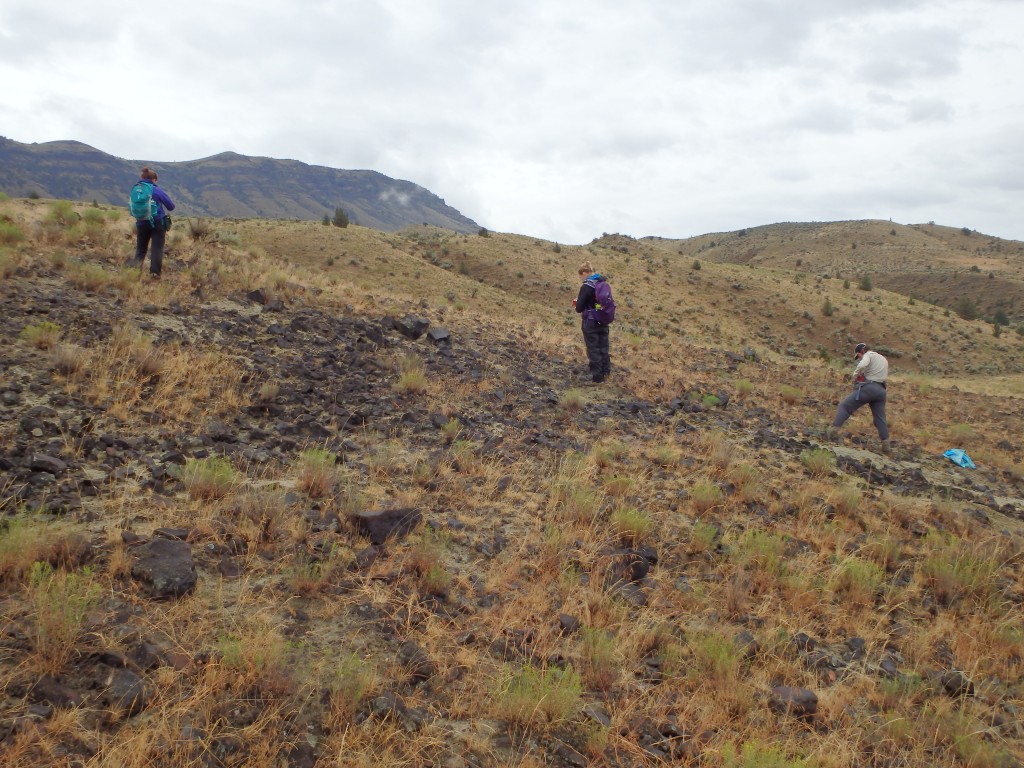
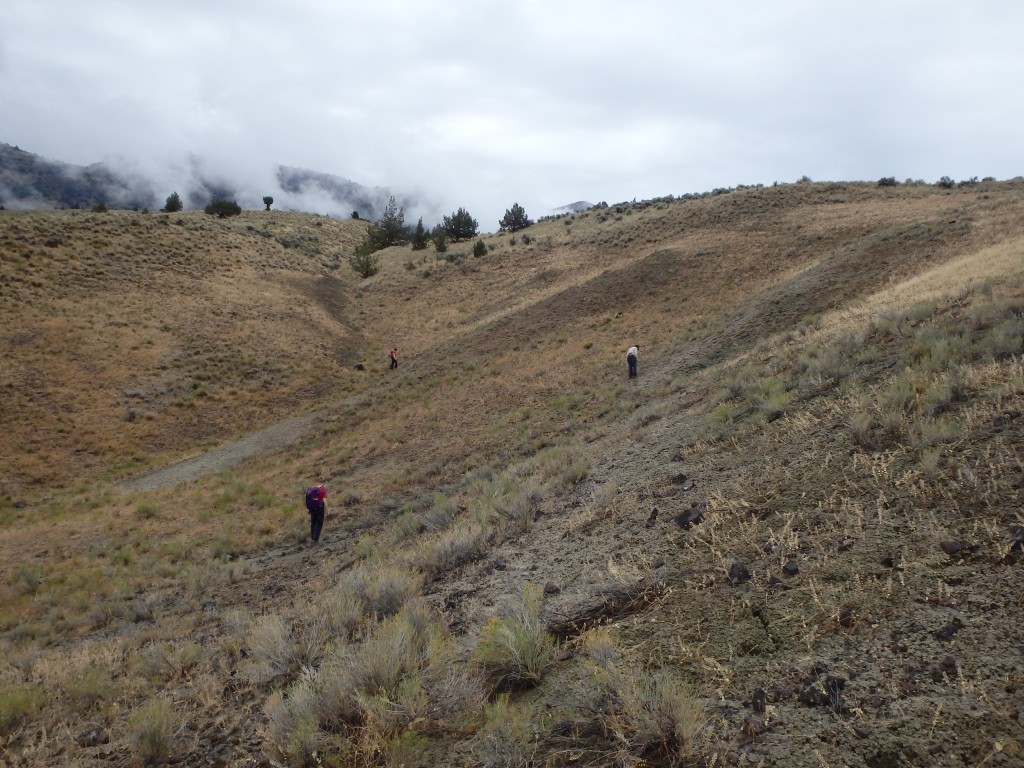
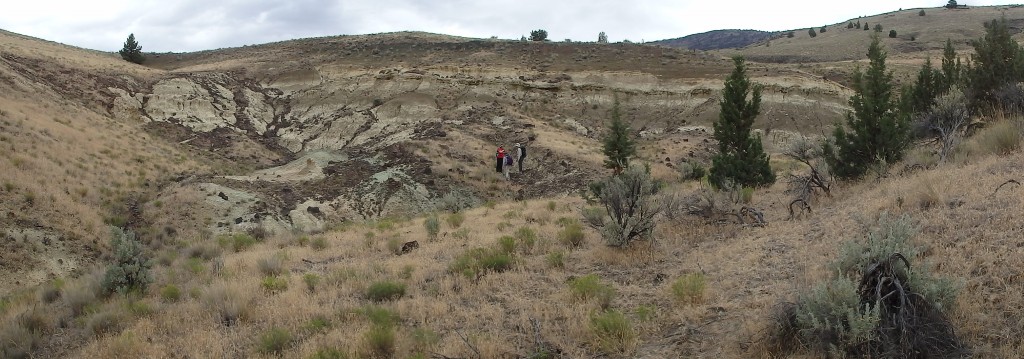
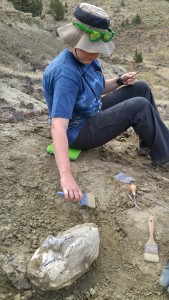
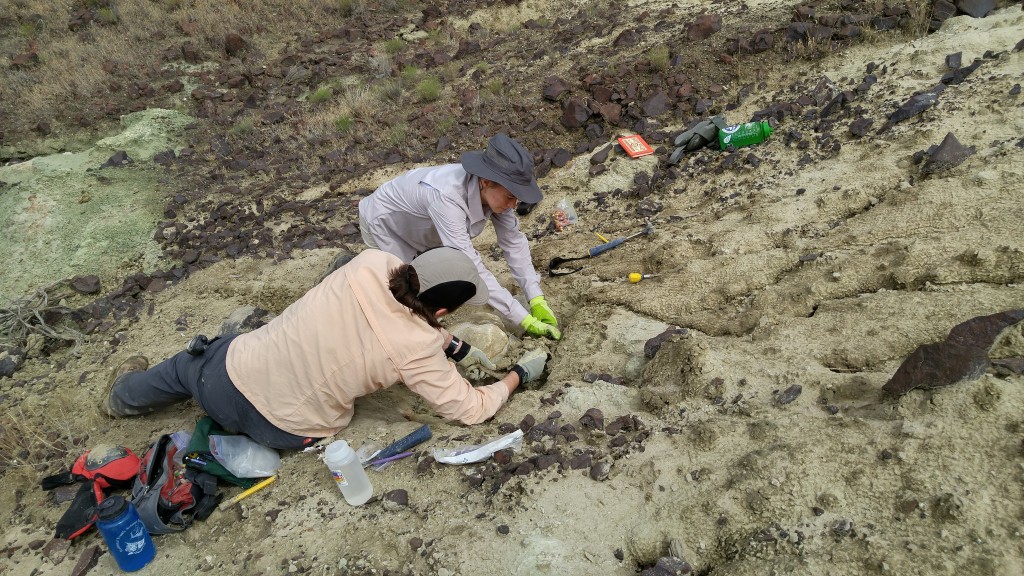

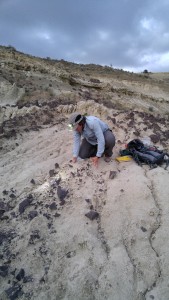
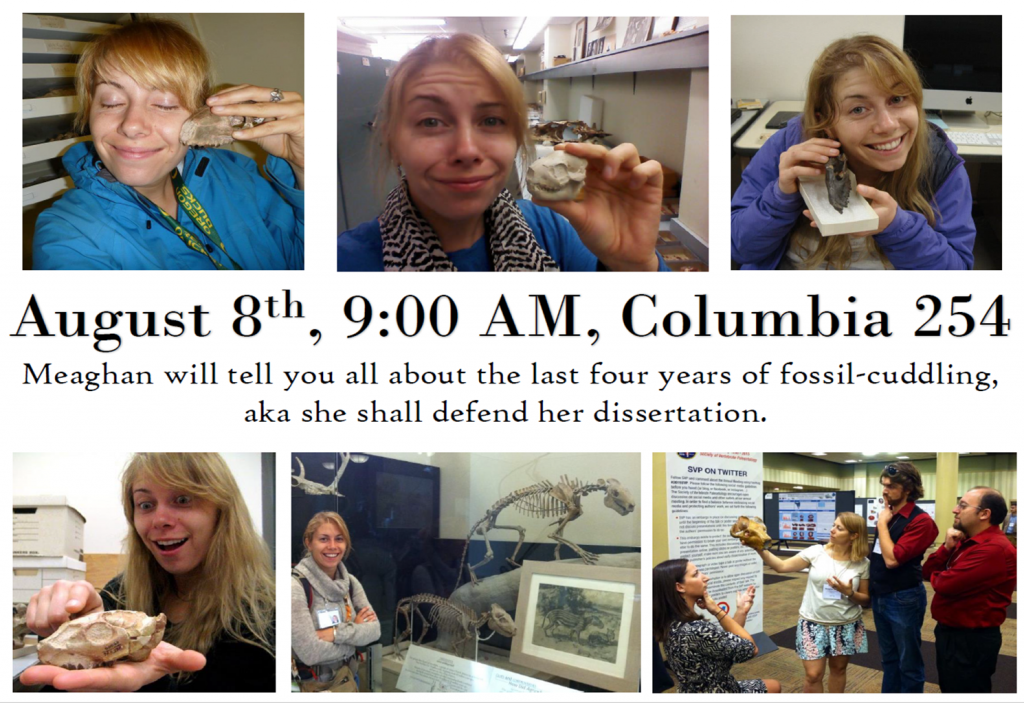
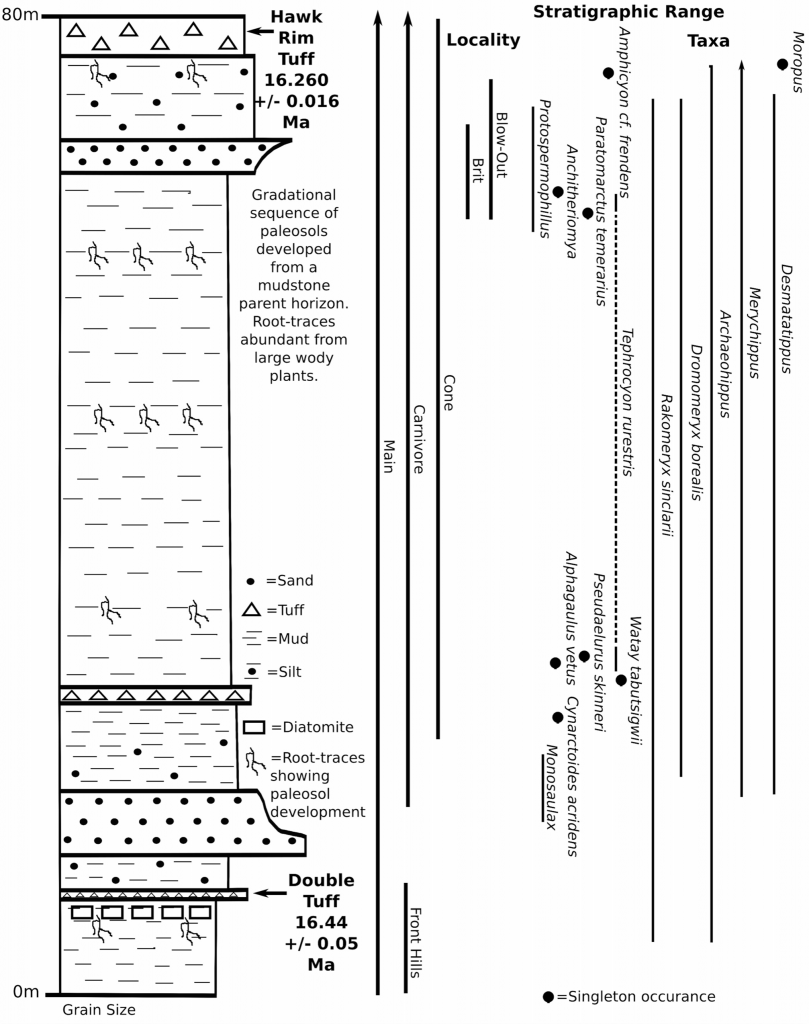
You must be logged in to post a comment.